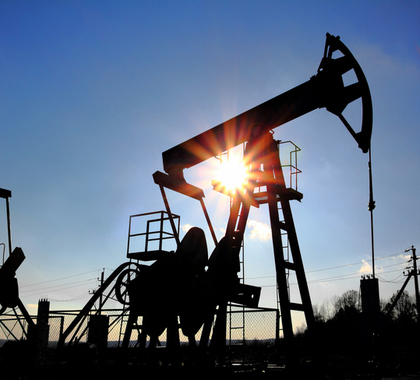A study released in November 2017 from researchers at Penn State University concludes methane leakage emissions from natural gas wells and infrastructure in the Marcellus Shale are just 0.4 percent of total production, which is notably low.
The researchers gathered samples over a two-year period from towers around the Marcellus Shale that continually collect emissions readings, as well performing readings during 12 separate aerial flyovers of the region. The study authors note this is the first study to make use of long-term continuous sampling of methane emissions; most studies only use aerial samples for a small number of days, which often shows a higher leakage rate.
“Using the model optimization technique presented in this study, we find a weighted mean natural gas emission rate from unconventional production and gathering facilities of 0.36% of production,” the study’s authors wrote. “This emission rate is supported by four mass balance calculations, which produce a mean of 0.40%.”
This 0.4 percent optimal mean leakage rate is “significantly lower than rates found using top-down methodology at any other basin.”
“It seems like natural gas is a good solution now, at least for the Marcellus Shale,” said researcher Thomas Lauvaux during a webinar in July promoting the authors’ preliminary findings. “Our results clearly suggest that it’s a clean source of energy. And on top of that, we can suggest a lot of gas with a very low leakage overall from the infrastructure.”
Methane is the the primary component of natural gas, and opponents of hydraulic fracturing, commonly called “fracking,” argue it is escaping into the atmosphere in sufficient quantities that burning natural gas to generate electricity could cause more global warming than burning coal.
According to data from the Environmental Protection Agency’s (EPA) Greenhouse Gas Reporting Program, the Appalachian Basin, which includes both the Marcellus and Utica shale plays, have dropped by 63 percent between 2011 and 2016. For all natural gas systems across the country, EPA data show a leakage rate of just 1.2 percent in 2015 – 30 percent lower than the global average. These significant decreases in emissions are coming at a time when there are skyrocketing increases in natural gas production due to the United States’ fracking revolution.
The U.S. Energy Information Administration (EIA) estimates fracking now accounts for 51 percent of all crude oil production in the United States and has transformed the energy outlook of the country over the past decade. EIA is notes the continuing switch of electricity-generation fuels to fracking-produced natural gas is responsible for 63 percent of the drop in U.S. energy-related carbon-dioxide emissions over the past decade. The rise of hydraulically-fractured shale gas as a replacement for coal has been primarily responsible for the United States now enjoying its lowest level of carbon-dioxide emissions since 1989.
As well as being environmentally safe, fracking has had a positive economic impact on those areas that have allowed the practice. A study released in late December 2016 of communities near shale basins – conducted by researchers at the University of Chicago, Princeton University, and the Massachusetts Institute of Technology (MIT) – determined hydraulic fracturing activity brings $1,300 to $1,900 in annual benefits to local households, including “a 7 percent increase in average income, driven by rises in wages and royalty payments, a 10 percent increase in employment, and a 6 percent increase in housing prices.”
“Our estimates are based on the knowledge that communities currently have … [and] based on what is currently known, the average community that has allowed fracking has enjoyed substantial net benefits,” said lead researcher Michael Greenstone of the University of Chicago.
In Pennsylvania, where a large part of the Marcellus is located, the U.S. Chamber of Commerce estimates the state would have lost $13 billion in state gross domestic product (GDP), $7.2 billion in labor income, and more than 117,000 jobs if the fracking energy revolution had never existed.
The oil and natural gas hydraulic fracturing has enabled us to exploit are cost-effective and abundant, and they can ensure the United States is the world’s largest energy producer well beyond the 21st century. Policymakers should make sure not to put unnecessary and harmful regulatory burdens on industries such as the natural gas and oil industries, which are safe, responsible, and have had an enormous positive impact on the economy at the macro and micro levels.
The following documents provide more information about natural gas and hydraulic fracturing.
The Local Economic and Welfare Consequences of Hydraulic Fracturing
https://heartland.org/publications-resources/publications/the-local-economic-and-welfare-consequences-of-hydraulic-fracturing
This comprehensive study published by the National Bureau of Economic Research says fracking brings, on average, provide $1,300–$1,900 in annual benefits to local households, including a 7 percent increase in average income, a 10 percent increase in employment, and a 6 percent increase in housing prices.
Impacts of the Natural Gas and Oil Industry on the U.S. Economy in 2015
https://heartland.org/publications-resources/publications/impacts-of-the-natural-gas-and-oil-industry-on-the-us-economy-in-2015
This study, conducted by PricewaterhouseCoopers and commissioned by the American Petroleum Institute, shows that the natural gas and oil industry supported 10.3 million U.S. jobs in 2015. According to the Bureau of Labor Statistics, the average wage paid by the natural gas and oil industry, excluding retail station jobs, was $101,181 in 2016, which is nearly 90 percent more than the national average. The study also shows the natural gas and oil industry has had widespread impacts in each of the 50 states.
What If … Hydraulic Fracturing Was Banned?
https://heartland.org/publications-resources/publications/what-if-hydraulic-fracturing-was-banned
This study is the fourth in a series of studies produced by the U.S. Chamber of Commerce’s Institute for 21st Century Energy. It examines what a nationwide ban on hydraulic fracturing would entail. The report’s authors found by 2022, a ban would cause 14.8 million jobs to “evaporate,” almost double gasoline and electricity prices, and increase natural gas prices by 400 percent. Moreover, cost of living expenses would increase by nearly $4,000 per family, household incomes would be reduced by $873 billion, and GDP would be reduced by $1.6 trillion.
What If … America’s Energy Renaissance Never Happened?
https://heartland.org/publications-resources/publications/what-ifamericas-energy-renaissance-never-actually-happened
This report by the U.S. Chamber of Commerce’s Institute for 21st Century Energy examines the impact the development of shale oil and gas has had on the United States. The report’s authors found that without the fracking-related “energy renaissance,” 4.3 million jobs in the United States may not have been created and $548 billion in annual GDP may have disappeared since 2009. Electricity prices would also be 31 percent higher and gasoline prices 43 percent higher.
Bill McKibben’s Terrifying Disregard for Fracking Facts
https://heartland.org/publications-resources/publications/bill-mckibbens-terrifying-disregard-for-fracking-facts?source=policybot
This Heartland Institute Policy Study, written by Research Fellow Isaac Orr, examines how methane emissions are measured, reports the effect those emissions may have on global warming, and discusses several falsehoods journalist Bill McKibben repeats from the discredited movie Gasland. It also evaluates the available fracking alternatives and discusses the relatively small impact new methane-emissions rules enacted by the Environmental Protection Agency will likely have on Earth’s climate.
Fracking Facts: The Science, Economics, and Legal Realities
https://heartland.org/publications-resources/publications/fracking-facts-the-science-economics-and-legal-realities
Hydraulic fracturing has been employed in the United States since the 1940s. Although innovation has improved the precision of the process, the essentials are the same. Utilizing horizontal drilling, a mixture of mostly water, sand, and trace amounts of chemicals, are used to create fissures in underground shale deposits to allow oil and natural gas trapped in hard rock to move toward the surface to be collected. Activists have blamed fracking and the processes associated with it for emissions of pollutants, earthquakes, and even groundwater contamination, though independent evidence consistently shows these allegations to be false. Leigh Thompson of the Texas Public Policy Foundation argues the evidence supporting fracking bans looks slim when attention is drawn to the facts.
Nothing in this Research & Commentary is intended to influence the passage of legislation, and it does not necessarily represent the views of The Heartland Institute. For further information on this subject, visit Environment & Climate News, The Heartland Institute’s website, and PolicyBot, Heartland’s free online research database.
The Heartland Institute can send an expert to your state to testify or brief your caucus; host an event in your state; or send you further information on a topic. Please don’t hesitate to contact us if we can be of assistance! If you have any questions or comments, contact John Nothdurft, Heartland’s director of government relations, at [email protected] or 312/377-4000.




